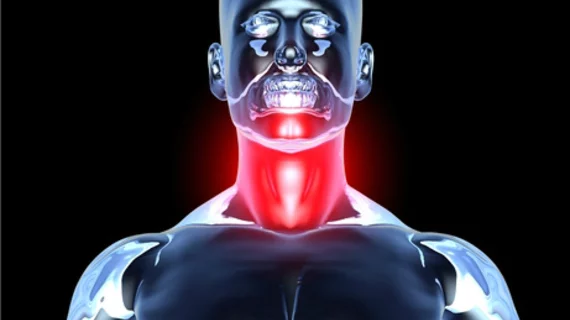A new machine learning technique can predict the negative side effects of radiation treatment in patients with head and neck cancers. The findings, presented at the American Society for Radiation Oncology (ASTRO) annual meeting, can help select patients who might need a more tailored care approach.
Jay Reddy, MD, PhD, with the University of Texas MD Anderson Cancer Center, and colleagues created their algorithms to analyze data from electronic health records, an internal web-based charting tool and the record/verify system. They found top-performing algorithms could accurately predict significant weight loss and feeding tube placement, but fell short at predicting unplanned hospitalizations
“In the past, it has been hard to predict which patients might experience these side effects,” Reddy, an assistant professor of radiation oncology at MD Anderson Cancer Center, said in an ASTRO statement. “Now we have a reliable machine learning model, using a high volume of internal institutional data, that allows us to do so.”
Around 53,000 people are diagnosed with head and neck cancers each year in the U.S., and when caught early, patients typically undergo radiation therapy or surgery. Almost all patients with these types of cancers will experience some negative effects of treatment, including damage to oral tissue, Reddy and colleagues wrote.
The models included more than 700 clinical and treatment variables for patients with head and neck cancers who had received more than 2,000 courses of radiation therapy from five MD Anderson sites between 2016 and 2018.
The top performing models achieved an AUC of 0.751 for predicting significant weight loss and an AUC of 0.755 at determining the need for feeding tube placement. These models were validated against 225 consecutive radiation therapy treatments.
Reddy and colleagues noted their models couldn’t accurately predict unplanned hospitalizations, achieving an AUC of 0.64. They suggested more data might improve this aspect of their top-performing algorithms.
Overall, their AI models could change the precision oncology landscape.
“Being able to identify which patients are at greatest risk would allow radiation oncologists to take steps to prevent or mitigate these possible side effects,” Reddy added. “If the patient has an intermediate risk, and they might get through treatment without needing a feeding tube, we could take precautions such as setting them up with a nutritionist and providing them with nutritional supplements. If we know their risk for feeding tube placement is extremely high – a better than 50% chance they would need one – we could place it ahead of time so they wouldn’t have to be admitted to the hospital after treatment. We’d know to keep a closer eye on that patient.”

